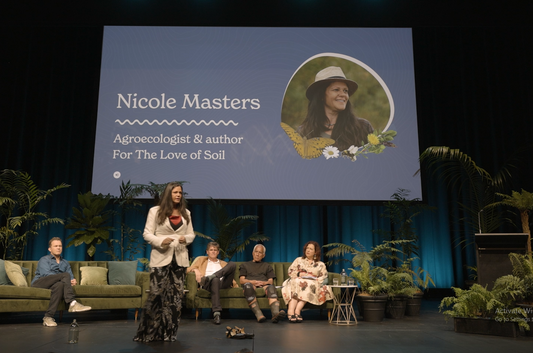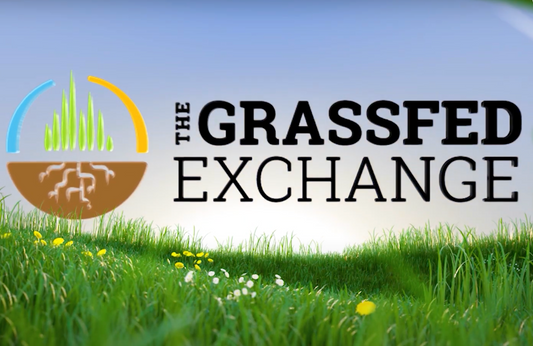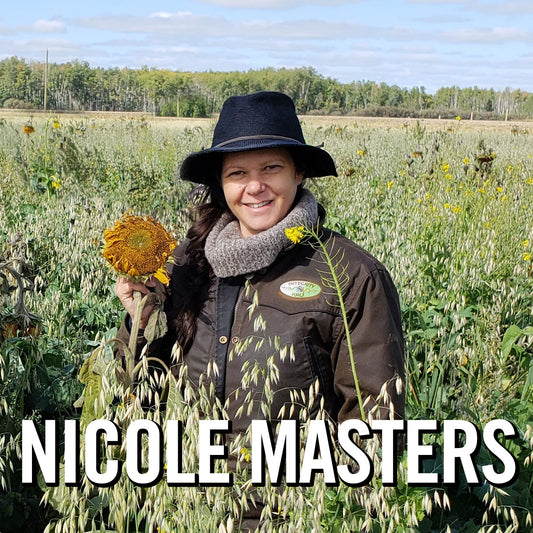I recently presented to 30 ‘conventional’ cropping operators. One topic raised was, “who wants to see their kids take over the farm?” The resounding response was…a long silence. Then into the void a farmer spoke up, “I’m sick of this stress, of the debt, and the increasing inputs. Why would I want to hand this over to my kids?” Times like these make me reflect on the profound positive difference regenerative land systems can make in people’s lives. We’re not just talking soil, we’re talking about a revolution that impacts on every aspect of rural life. And its time is now.
If you put all of these pieces together, the Green Revolution has not delivered on its promises to producers. It is however delivering for the banks, supply and chemical companies; they come out laughing whichever way the dice land. The FAO (Food and Agriculture Organisation) is certain that modern farming has increased the risks for food producers, with market volatility and increasing climactic unpredictability. And farming is a risky business. Nature is fickle mistress; as all who work on the land know. How to mitigate risk is the greatest challenge for producers today.
I once had the privilege to hear a powerful presentation by soil scientist Dr Daniel Hillel. In 2012 he received the World Food Prize for developing a method termed “micro-irrigation agriculture” which increases water efficiencies in arid climates. He shared his story of camping with Bedouin in the Arab desert, he overheard an elder asking his students what 1+1 equals. Their answers were more varied than the stock standard “2” that western children are raised to answer. One child replied thoughtfully; “well, if it’s one nanny goat and one billy, then 1 plus 1 could be 3 or 4”.
When working with biological systems, 1+1 rarely equals 2. We often see surprising results as soil systems function again, as they flocculate (open-up), roots penetrate deeper, nutrient cycles turn and the carbon buffer builds.
There are multiple factors involved in building topsoil, one driver happens from the top down, with biological activity, and the other happens bottom-up through chemical and microbial mineralization. These soil building processes can dramatically speed up, making previously unavailable ‘locked-up’, raw mineral materials available to crops. One NZ high country station we’ve worked with saw the equivalent lifts of 1500 kg/Ha (1300 lb/Ac) in calcium in just one year across treated areas on the farm. That’s with no additions of calcium. Dr David Johnson (NMSU), Col Seis, the Haggerty’s, Gabe Brown (and many others) are measuring plant-available nutrient increases from 200 to over 1000% higher, just through stimulating this microbial mineralization process. It is how soils are meant to function; all without the need for external inputs. Consider, did a fertilizer truck follow the bison around?
I’m not saying the natural cycles are closed however, they not. We live in an interconnected world. The global P cycle is driven by organic inputs from animals like birds, bears, buffalo and wind. In 2015 NASA discovered that the Sahara was delivering phosphate dust to the Amazon, at about the same rate it was losing from erosion; around 22,000 T of the stuff every year. In many regions collapses in biodiversity are leading to catastrophic declines in ecosystem health. New Zealand forests for instance, once dependent upon regular seabird guano, are now hungry for P and diseases are running rampant. Bears in North America were significant contributors of nutrients, including N and P from their rich salmon diets, apparently yes, they do poo in the woods.
No man, or woman, is an island. Encouraging biodiversity, brings increased nutrients from outside the farm gate. A recent study in Nature concluded that seabirds are full of crap (at least that’s how I interpreted the papers title), with excrement making a global contribution to over 1.3 billion pounds of N and 218 million pounds of P. With birds and insects in our agricultural lands in rapid decline, their losses are having a broader impact on nutrient cycling. Insects are the “nitrogen thieves” in any ecosystem and when they poop and die they may be contributing as much as 40kg / N/ Ha! In an organic form readily available when plants need it. Unfortunately scientists are estimating we’re in the middle of a catastrophic insect extinction event, how much potential N have you lost or gained by encouraging insect diversity?
Our modern practices which create monocultural deserts are putting the costs back onto farmers, society and the wider environment. It’s not a lack of fertilizer that drives profit and resilience, it’s diversity. Diversity which is enhanced by diverse microbial communities, plant rooting systems, insects, birds, livestock and diverse crops. How can you increase the diversity above and below-ground? It’s well overtime for use to step away from 19th century extractive thinking into the 21st century of regeneration.
By Nicole Masters




